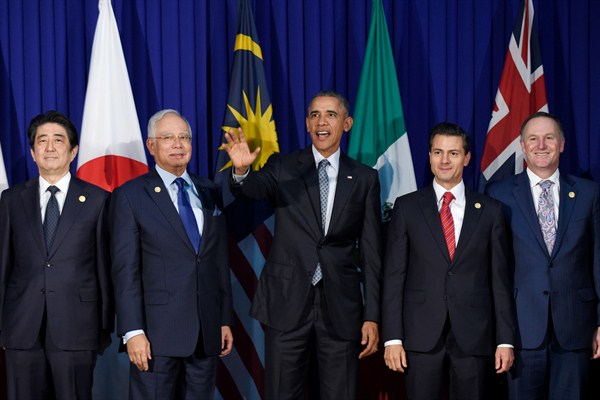There is no other area of global governance—not climate change, not management of the oceans, not monetary policy, not peacekeeping—in which the nations of the world have agreed to cooperate more closely than on the rules governing international trade. But over the past half-century, each step toward greater trade cooperation has been a bit harder than the last.
The fate of the Trans-Pacific Partnership (TPP) trade agreement—the recently concluded mega-regional deal linking the United States, Japan and 10 other Pacific Rim countries—will likely decide whether the historic project of building better global rules for trade continues, or collapses under its own weight. The TPP, which has been under negotiation for nearly a decade and now awaits difficult ratification battles in each member country, offers the best hope for restarting a global push for trade liberalization after more than two decades of stagnation.
After the end of World War II, the United States was the great champion of multilateral trade liberalization. Reducing tariffs and other trade barriers on a global basis offers the greatest economic benefits by encouraging investment to follow business opportunities rather than preferential rules. With rare exceptions, such as its free trade deal with Israel in 1985 and the North American Free Trade Agreement (NAFTA) with Canada and Mexico in 1993, the U.S. was long willing to set aside the political advantages of special deals for the global economic gains of a multilateral approach.

